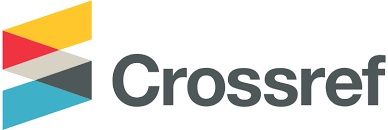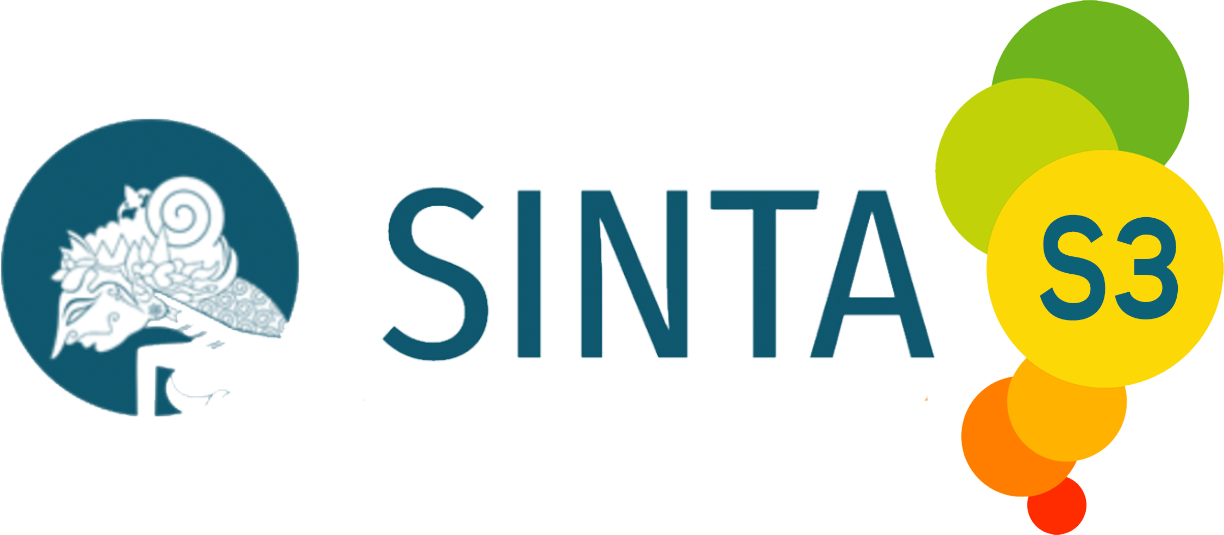Gelatin Production from Skin of Chicken Leg using A Variety of Naoh Concentration
DOI:
https://doi.org/10.21776/ub.jitek.2018.013.02.7Keywords:
Gelatin, gallus gallus domesticus, soaking agent, physicochemical propertiesAbstract
Gelatin is a type of protein that is extracted from collagen of skin, bone, or ligament (animal connective tissue) tissue. Cow bone, cowhide and pig skin are the materials commonly used to obtain gelatin. The purpose of this research was to determine the difference of NaOH concentration as soaking agent on gelatin making from skin of chicken leg (Gallus gallus domesticus) for 72 hours of soaking. Fresh skin of chicken leg weighing 250 g were immersed in NaOH solution with concentrations of 1%, 1.5%, and 3% for 72 hours, then extracted using n-hexane solution: alcohols in a ratio of 1: 3 and dried to obtain gelatin. The resulting gelatin is then analyzed for physicochemical characteristics such as sensory, yield, pH test, and water content test. The results of this study, mentioned that the concentration of 1% NaOH solution produces gelatin under average of yield of 6 g, neutral pH and water content of 11%. The concentration of 1.5% NaOH solution produces gelatin under average of yield 8 g, pH 7 and water content of 13%. The concentration of 3%NaOH solution produces gelatin under average of yield 4.144 g, pH 7 and water content of 7.11%. Based on the result, it can be concluded that a good solution of NaOH to get high yield under a concentration of 1.5% solution. The gelatin obtained under 1.5% solution in accordance with the standard gelatin. The characteristics of standard gelatin are colorless to yellow, odorless, tasteless, pH 7 (neutral), and moisture content below 16%.
References
Astawan, M., Hariyadi, P., & Mulyani, A. (2002). Analisis sifat reologi gelatin dari kulit ikan cucut. Jurnal Teknologi Dan Industri Pangan, 13, 38–46.
BPS. (2015). Statistik Perdagangan Luar Negeri (Vol. 38425). Jakarta: Badan Pusat Statistik.
Duconseille, A., Astruc, T., Quintana, N., Meersman, F., & Sante-Lhoutellier, V. (2015). Gelatin structure and composition linked to hard capsule dissolution: A review. Food Hydrocolloids, 43, 360–376. https://doi.org/10.1016/J.FOODHYD.2014.06.006
Etxabide, A., Urdanpilleta, M., Guerrero, P., & de la Caba, K. (2015). Effects of cross-linking in nanostructure and physicochemical properties of fish gelatins for bio-applications. Reactive and Functional Polymers, 94, 55–62. https://doi.org/10.1016/J.REACTFUNCTPOLYM.2015.07.006
Gelatin Production from Skin of Chicken Leg
Haryati, T. (2011). Formulasi Permen Jelly Multivitamin dengan Gelatin Kulit Ceker Ayam sebagai Bahan Pembentuk Gel. Universitas Muhammadiyah Purwokerto.
Hasdar, M., & Rahmawati, Y. D. (2017). Kajian potensi kulit domba asal brebes sebagai bahan dasar produksi gelatin halal. Jurnal Aplikasi Teknologi Pangan, 6(1), 1–6. https://doi.org/10.17728/jatp.211
Irwandi Jaswir, I., Monsur, H., & Salleh, H. (2011). Nano-structural analysis of fish collagen extracts for new process development. African Journal of Biotechnology, 10(81), 18847–18854. https://doi.org/10.5897/AJB11.2764
Kuan, Y.-H., Nafchi, A. M., Huda, N., Ariffin, F., & Karim, A. A. (2016). Effects of sugars on the gelation kinetics and texture of duck feet gelatin. Food Hydrocolloids, 58, 267– 275. https://doi.org/10.1016/J.FOODHYD.2016.02.025
Liu, D., Nikoo, M., Boran, G., Zhou, P., & Regenstein, J. M. (2015). Collagen and gelatin. annual Review of Food Science and Technology, 6(1), 527–557. https://doi.org/10.1146/annurev-food-031414-111800
Marzuki, A., Pakki, E., & Zulfikar, F. (2011). Ekstraksi dan penggunaan gelatin dari limbah tulang ikan bandeng (Chanos Chanos Forskal) sebagai emulgator dalam formulasi sediaan emulsi. Majalah Farmasi Dan Farmakologi, 15, 63–68.
Mhd Sarbon, N., Badii, F., & Howell, N. K. (2013). Preparation and characterisation of chicken skin gelatin as an alternative to mammalian gelatin. Food Hydrocolloids, 30(1), 143–151. https://doi.org/10.1016/J.FOODHYD.2012.05.009
Mohebi, E., & Shahbazi, Y. (2017). Application of chitosan and gelatin based active packaging films for peeled shrimp preservation: A novel functional wrapping design. LWT - Food Science and Technology, 76, 108– 116. https://doi.org/10.1016/J.LWT.2016.10.062
Rafieian, F., Keramat, J., & Shahedi, M. (2015). Physicochemical properties of gelatin extracted from chicken deboner residue. LWT - Food Science and Technology, 64(2), 1370–1375. https://doi.org/10.1016/J.LWT.2015.04.050
Said, M. I., Triatmojo, S., Erwanto, Y., & Fudholi, A. (2012). Karakteristik gelatin kulit kambing yang diproduksi melalui proses asam dan basa. Agritech, 31(3), 190–200. https://doi.org/10.22146/AGRITECH.9744
Setiawati, I. H. (2009). Karakteristik Mutu Fisika Kimia Gelatin Kulit Ikan Kakap Merah (Lutjanus sp.) Hasil Proses Perlakukan Asam. Fakultas Perikanan dan Ilmu Kelautan Institut Pertanian Bogor.
Shyni, K., Hema, G., Ninan, G., Mathew, S., Joshy, C. G., & Lakshmanan, P. T. (2014). Isolation and characterization of gelatin from the skins of skipjack tuna (Katsuwonus pelamis), dog shark (Scoliodon sorrakowah), and rohu (Labeo rohita). Food Hydrocolloids, 39, 68–76. https://doi.org/10.1016/J.FOODHYD.2013.12.008
Yuniarifin, H., Bintoro, V. P., & Suwarastuti, A. (2006). Pengaruh berbagai konsentrasi asam fosfat pada proses perendaman tulang sapi terhadap rendemen, kadar abu dan viskositas gelatin. J. Indonesian Trop. Anim. Agric, 31, 55–61.
Downloads
Published
Issue
Section
License
Copyright (c) 2018 Rety Setyawaty, May Triliandari

This work is licensed under a Creative Commons Attribution 4.0 International License.
Authors who publish with this journal agree to the following terms:
- Authors retain copyright and grant the journal right of first publication with the work simultaneously licensed under a Creative Commons Attribution License that allows others to share the work with an acknowledgement of the work's authorship and initial publication in this journal.
- Authors are able to enter into separate, additional contractual arrangements for the non-exclusive distribution of the journal's published version of the work (e.g., post it to an institutional repository or publish it in a book), with an acknowledgement of its initial publication in this journal.
- Authors are permitted and encouraged to post their work online (e.g., in institutional repositories or on their website) prior to and during the submission process, as it can lead to productive exchanges, as well as earlier and greater citation of published work (See The Effect of Open Access).















